Catch up with Wilmington history with this guide to all Cape Fear Unearthed episodes

Since 2018, the StarNews has brought back to life the many historical places and moments that have impacted Wilmington and all of Southeastern North Carolina with Cape Fear Unearthed.
The podcast, which now spans more than 80 episodes, digs into the history books to feature stories drawn from the region's persisting legends, historical oddities and mysterious figures that have helped shape its legacy and culture.
Our story: A guide to stories chronicling Wilmington history
Like us on Facebook: Join the conversation on social media at Cape Fear Unearthed
We always welcome suggestions for episodes ... and if you're unsure if we've hit on a topic of your interest, you can look back below with this episode guide.
March 2022: The lost railroad
We talk with Mark W. Koenig, the former director of the Wilmington Railroad Museum. In January, his first book, "The Wilmington, Brunswick and Southern Railroad," was published by Arcadia Publishing and The History Press. In it, he uncovers the history of the long-forgotten railroad line.
February 2022: Black historic sites
We talk with StarNews investigative reporter Matthew Prensky about a 1983 study commissioned by the city of Wilmington that documented more than 100 historic sites and structures of significance to the Black community. The study was shelved, and more than two dozen of those structures have since been demolished.
February 2022: Wilmington's historic photos
A deep dive into more than 15,000 historic Wilmington photographs the Cape Fear Museum recently made available to the public on its website. Some photos date back to the 1860s, and together, they help tell the story of Wilmington -- the good, the bad and the ugly -- in a way words never could.
January 2022: Temple of Israel
Built in 1876 at Fourth and Market streets, Wilmington's Temple of Israel is believed to be the oldest synagogue in North Carolina and the 10th oldest in the United States in continuous use.
More: Historic Wilmington synagogue needs 'urgent' repairs, estimate cost at $500,000
We talk with longtime Temple members Glen and Beverly Tetterton about the history of the Temple, the history of Jewish people in Wilmington and about the ongoing campaign to raise money to fix the historic building.
December 2021: The Christmas Flounder
The tale of the Christmas flounder has captured the imagination of Wilmingtonians ever since the story began running in the StarNews every Christmas Eve back in the early 1980s. We look into the Christmas flounder's rather murky origin story.
November 2021: Legacy Architectural Salvage
We talk to the folks at Legacy Architectural Salvage, an offshoot of the Historic Wilmington Foundation, about their work in preserving old building materials for future home renovation and construction projects.
October 2021: Searching for 1898 descendants
A talk with Jim Downey and Tim Pinnick of the New Hanover County Community Remembrance Project, who are involved with some of the efforts to commemorate the events of 1898, in part by finding the descendants of those who were killed.
October 2021: The bridges of New Hanover County
The history of bridges in New Hanover County, both the ones that exist today, and ones that preceded them.
September 2021: Wilmington film and the Ideal Cement factory
Here's some Wilmington film history that took place in an unlikely location in the northern wilds of New Hanover County.
The massive, shut-down Ideal Cement plant near Castle Hayne has been the site of a dozen or more major film productions through the decades, some of them with very famous names: “The Crow,” “Super Mario Bros.” and “Teenage Mutant Ninja Turtles," just to name three.
August 2021: Wilmington's 100-year-old businesses
A century is a long time. Almost no one even lives that long. But as we look back on the history of Wilmington, there are a handful of businesses that have stood the test of time and, through multiple generations, survived, and even thrived, for 100 years or more. With guest Wilbur Jones, a historian and native Wilmingtonian.
June 2021: Wilmington goes to the movies
A look at the many Wilmington movie theaters and drive-ins from yesteryear. Wilmington native Ann Hutteman saw movies at many of these locations, and she shares her memories with us.
May 2021: Historic Wilmington Foundation
Founded in 1966, the Historic Wilmington Foundation, which has saved dozens if not hundreds of prominent structures in downtown Wilmington, has made its name on preserving the past for future generations. We talk with new executive director Travis Gilbert and HWF staffer Isabelle Shepherd about how the group is adapting to meet present-day challenges.
May 2021: Hemenway Hall
On May 16 and 17, 1971, a fire destroyed Hemenway Hall in downtown Wilmington. The New Hanover County Board of Education building, built in 1915, was formerly Hemenway School.
More: 50 years later, fire that destroyed Hemenway Hall in Wilmington remains a mystery
The cause of the fire remains a mystery, but the anniversary opens a window to a time of great unrest in Wilmington.
April 2021: Cape Fear Explorers
We talk to Kevin Mercer of Cape Fear Explorers about the many historical artifacts he's found in Southeastern N.C. And we speak to Elton Franks about a very special find he made recently in Brunswick County: What appears to a Native American "peace medal" dating back to the early 1700s.
April 2021: North Carolina Azalea Festival queens
Victoria Huggins, the 74th queen of Wilmington's N.C. Azalea Festival, talks with host John Staton about some of the festival's most famous and notable queens, as well as some of her personal favorites.
Huggins is the first Miss North Carolina — as well as the first Miss Wilmington — to be named queen of the storied Wilmington festival, which she grew up attending as a child growing up in rural Robeson County.
March 2021: The Mad Monk
Wilmington rock club The Mad Monk only lasted for 13 years, from 1983 to 1996. But the impact it had on live music in the Port City continues to this day.
More: 25 years ago The Mad Monk, one of Wilmington's most iconic venues, closed for good
On the 25th anniversary of its closing, John Staton talks to Jeff Reid about the Mad Monk's heyday and its legacy.
March 2021: Goodbye, Farewell and Hello
A new era begins on Cape Fear Unearthed creator Hunter Ingram bids farewell to the podcast and welcomes new host John Staton to the show.
More: Not your typical history lesson: 15 essential episodes of Cape Fear Unearthed
More: Hunter Ingram says farewell to Cape Fear Unearthed, new host named for podcast
Hear about Ingram's work at Old Baldy Lighthouse, what stories Staton wants to bring to the show and how the origins of the podcast can be traced to the tunnels underneath downtown Wilmington.
February 2021: U.S. Colored Troops and the Battle of Forks Road
Long forgotten by history, the Battle of Forks Road was the last domino to fall before Wilmington was captured by Union forces in the final year of the Civil War.
But even more than its military significance, it was a key theater of war for the United States Colored Troops. Across 175 regiments, the USCT was made up primarily of African Americans looking to do their part to ensure President Abraham Lincoln's forces – and his recent Emancipation Proclamation – won the war.
More: With 'Boundless,' artist Stephen Hayes connects Black history to Wilmington's future
February 2021: Ellerbrock and Boss
They were inseparable in life and they were inseparable in death.
Whoever said a dog is man's best friend would have certainly smiled at the bond between Capt. William Ellerbrock and his dog, Boss, both of whom lived in Wilmington in the late 1800s.
The pair would become the lone victims of a vicious blaze in downtown Wilmington in April 1880, victims of circumstance who died committed to unwavering heroism. But their story is bigger than just its tragic end. It speaks to the community of Wilmington and the bravery its residents have shown in its moments of need.
December 2020: Atlantic Coast Line Railroad
To shock of Wilmington, the Atlantic Coast Line Railroad announced it would be ending its century-long relationship with the city, where it operated its headquarters in 1900, and moving to a new city.
It was a devastating day that provided a harsh period to a massive legacy for the railroad in Wilmington, an industry that put the region on the map and thousands of its residents to work.
In recognition of the 65th anniversary of Black Thursday, Cape Fear Unearthed is closing out 2020 with an episode on the steamrolling history of the railroad in Wilmington. Starting with the Wilmington & Weldon Railroad Company in 1834, the episode weaves through the next century of local challengers, mergers and an in-depth look at the incredible scale of the railroad’s local presence.
December 2020: The World's Largest Living Christmas Tree
For more than 80 years, Wilmington had the ultimate icon of the holidays right in its backyard.
The World's Largest Living Christmas attracted tens of thousands of visitors every year to marvel at its height and outstretching branches, draped in lights and ornaments galore.
The tree was centerpiece of the holidays for the Cape Fear, and it's service to the community traces through World War II, the mid-century prosperity, the Christmas tree competition of the 1980s and the changing relationship between Wilmington residents and its public places.
November 2020: Unearthing 1898, Part 3
On the morning of Nov. 11, 1898, Wilmington was a city in shock.
The day prior, chaos reigned on the streets when a mob of armed white supremacists unleashed intimidation, threats and gunfire on the Black residents of Wilmington.
In the third episode of "Unearthing 1898," host Hunter Ingram and guests look at Wilmington in the days and years after Nov. 10, 1898.
More: 'Listen to the blood': Funeral commemorates victim of Wilmington massacre 123 years later
What happened to the Black residents who fled or were banished from the city, many of them spending days hidden in fear in Wilmington swamps and cemeteries? How did the newly seized local government respond to the day of violence and attempt to restore order in an unruly city?
And how did the events of 1898 lead to widespread legislative, economic, culture and societal changes that persisted throughout the state for decades and are still being dealt with today?
Joining the episode are LeRae Umfleet, the author of "A Day of Blood" and lead research of North Carolina's commission on 1898; Cynthia Brown, historian of St. Stephens AME Church in Wilmington; and David Cecelski, historian and co-author of "Democracy Betrayed."
November 2020: Unearthing 1898, Part 2
On the morning of Nov. 10, 1898, hell jolted loose in Wilmington, as it was later described.
Chaos filled the streets as a mob of armed white men swept across the city, burning The Daily Record.
More: 'Wilmington's Lie,' David Zucchino book on 1898 coup, receives Pulitzer Prize
More: Could the Capitol riot finally force America to face 1898 Wilmington massacre?
In the second episode of "Unearthing 1898," host Hunter Ingram and guests look at Wilmington on Nov. 10, 1898, from sunup to sundown. How did the day of violence and fear begin and how did the agenda of white supremacy sweep across Wilmington? What actions were taken by the white residents of the city and what horrors were its Black residents forced to endure?
Joining the episode are LeRae Umfleet, the author of "A Day of Blood" and lead research of North Carolina's commission on 1898; David Zucchino, author of "Wilmington's Lie;" and Christopher Everett, director of "Wilmington on Fire."
November 2020: Unearthing 1898, Part 1
On the morning of Nov. 10, 1898, Wilmington awoke to violence in the streets.
A white supremacist mob had started the morning by marching through the city, burning a Black-run newspaper and eventually killing Black citizens in the streets before overthrowing the local government.
But to understand the truly horrific motivations behind the 1898 Wilmington Massacre, we have to first explore what set the stage for it.
More: A reading and resource guide to the 1898 Wilmington massacre
More: What is the state of awareness for 1898 massacre in Wilmington?
In the first episode of "Unearthing 1898," host Hunter Ingram and guests look at Wilmington from the end of the Civil War through the Election of 1898, exploring how the city became a majority Black community, why it was an example of racial progress in the country, how a political shift in power terrified white Democrats desperate to hold onto control, and the ways they set in motion a plan to steal that power back through duplicitous and downright murderous means.
Joining the episode are LeRae Umfleet, the author of "A Day of Blood" and lead research of North Carolina's commission on 1898; Jan Davidson, historian of the Cape Fear Museum; and Chris E. Fonvielle Jr., a historian and author.
October 2020: Lula's Pub
Lula's Pub is a downtown Wilmington bar beloved for its underground aesthetic, its low-key atmosphere and its ghost story, which tells of a former slave killed on the property who now greets guests in mirrors or dark corners.
Venture down a dark, cramped hallway and into this subterranean hideaway that's lit with string lights and neon signs. It's a small communal space, but it's legend of the man who haunts the property is one that has stood the test of time.
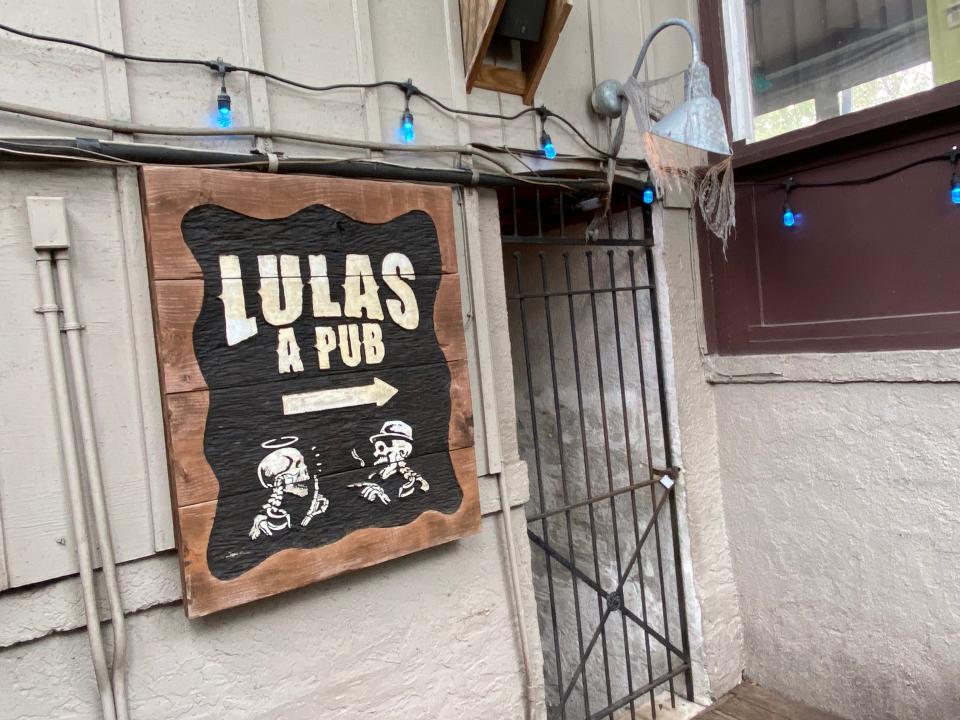
Still, it begs the question, is the story of Cooter true? And what strange encounters have happened on the property, itself a story of historic progress in downtown Wilmington?
October 2020: Lizzie Turlington
Lizzie Turlington was a promising leader in North Carolina's deaf mute community in 1886 when she was murdered in the woods outside of Raleigh.
The Wilmington native was shot once in the head by the man who had taken her for a leisurely ride that Friday afternoon in December – her fiancé Walter Bingham.
Turlington's story became famous as the manhunt for Bingham unfolded into the new year, one in which they were supposed to get married. But it became infamous when his name was engraved on her gravestone at Wilmington's Oakdale Cemetery, under the words "Murdered By."
Who were Turlington and Bingham? What happened on that lonely road outside Raleigh on Dec. 17, 1886? Why did her family want to etch their fateful encounter into stone forever?
September 2020: Washington, Taft, Fillmore — Wilmington's presidential visits
In 1791, George Washington, just two years into his presidency, set out on a tour of the Southern States. Nearly 120 years later, William Howard Taft celebrated his first year in office with a tour of 33 states and territories.
On each trip, the presidents took time to stop into Wilmington, where they were welcomed with massive celebrations and enthusiastic citizens.
Three other presidents – James Monroe, James K. Polk and Millard Fillmore – also made stops into Wilmington during or immediately after their terms in offices.
What brought them here? What did the city have planned for each of their visits? And what did their journeys to Wilmington say about the time in which they served as commander in chief?
September 2020: Frying Pan Tower
Frying Pan Tower was once the first light of the Cape Fear, serving as a light station 32 miles off the coast of Southeastern North Carolina to warn mariners of the dangers of Frying Pan Shoals.
Today, it has been retired by the U.S. Coast Guard and is well past its prime, but a group of owners and volunteers are working against rust and time to preserve and restore it for the future.
![The Frying Pan Lightship blows a final whistle as it hands off its duty as the light of Frying Pan Shoals to Frying Pan Tower on Nov. 24, 1964. [PHOTO COURTESY OF DR. ROBERT M. FALES COLLECTION/NEW HANOVER COUNTY PUBLIC LIBRARY]](https://s.yimg.com/ny/api/res/1.2/YpJJAnL6EW7wKJ51f.S1xA--/YXBwaWQ9aGlnaGxhbmRlcjt3PTk2MDtoPTE0ODk-/https://media.zenfs.com/en/star-news/59b002bc8663b80eee8fd63382624ebb)
This special episode was recorded live on deck of Frying Pan Tower, featuring a interview with former owner and current non-profit director Richard Neal, who talks about buying the tower a decade ago, how they are working to preserve the structure and what life is like on the 135-foot tower.
To donate or register to volunteer at Frying Pan Tower, visit FPTower.org.
August 2020: Bellamy Mansion
As Confederate monuments come down across the country, the historic Bellamy Mansion’s intertwined stories of Southern prosperity and slavery have only invited more questions about the history of the 160-year-old Wilmington residence and what it has to say about the city’s past and present.
Cape Fear Unearthed digs deep into those questions with an exploration of its defining family and their ties to the Confederacy; the experiences of the Black men and women, both enslaved and free, who built and ran the house; and what role the mansion now plays in the conversations of race and politics.
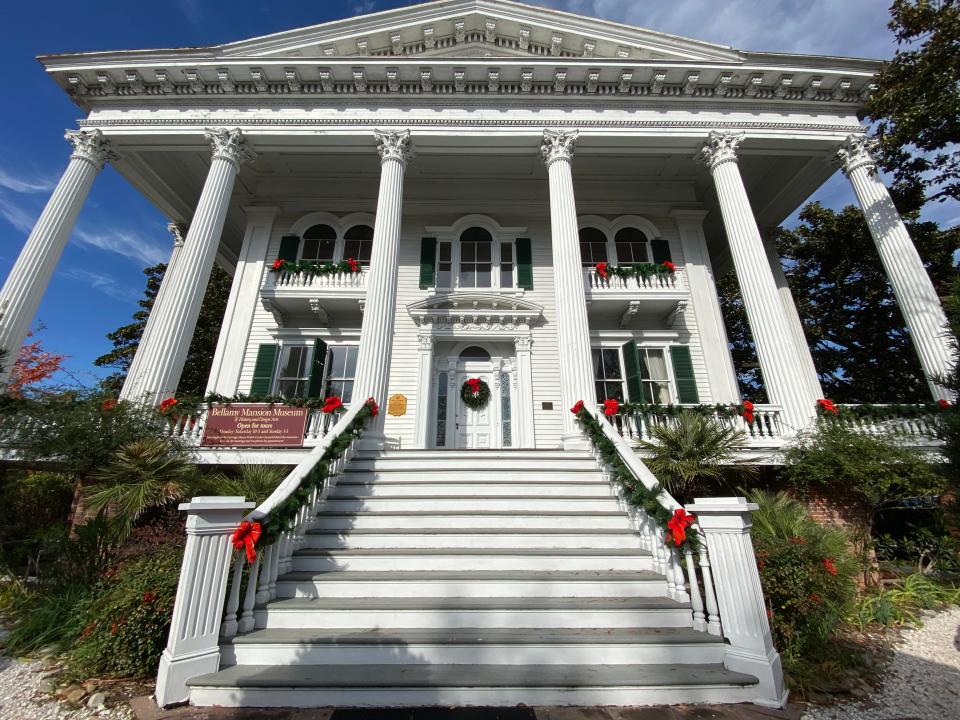
Joining this extended episode are Bellamy Mansion Museum director Gareth Evans and operations manager/site historian Leslie Randle-Morton, who talk about the history of the house after the war, the involvement of the Bellamys in politics and major events like the 1898 Wilmington Coup, and why the house can be such a valuable resource today, especially in 2020.
August 2020: Women's suffrage in North Carolina
The Women's Suffrage Movement was fought city by city, league by league for nearly eight decades.
Changing the country's mind on what role women should play in society was never going to be an easy fight, but for years, the suffragettes at the center of the movement persisted.
On Aug. 18, 1920, their work paid off when the 19th Amendment was ratified and women officially got the right to vote. In an eleventh hour turn of events, North Carolina played a role in those final days of the fight – by voting down the amendment.
To commemorate the 100th anniversary of this victory, this episode of Cape Fear Unearthed features a special conversation with Cape Fear Museum historian Jan Davidson about the movement.
July 2020: How Smithville became Southport
Before it was one of North Carolina’s most desired destinations, the setting of Nicholas Sparks’ “Safe Haven” or a quaint fishing village, Southport was supposed to be the first line of defense for the Cape Fear.
The land that would become the Brunswick County getaway was originally designated as Fort Johnston in the 1740s, intended to protect the growing ports of Brunswick Town and Wilmington from Britain’s enemies. But the fort’s mighty vision never came to be.
In this episode, we look at how, from that unrealized dream, a town blossomed around the remains of the fort after the Revolutionary War and grew into a popular respite for Wilmington’s residents.
Over time and through at least three major wars, the community flourished into the town of Smithville, later renamed Southport in 1887 to try and court business and railroad attention flocking to Wilmington – all while remaining a linchpin in the region.
July 2020: Wilmington's Confederate statues
In June 2020, the city of Wilmington removed two downtown statues to the Confederacy that had been publicly displayed for a century or more (a year later, it removed the statues' pedestals).
More: Emails point to origins of Wilmington's plan for the removal of Confederate monuments
One was a memorial to those soldiers from New Hanover County who fought for the South, the other was a statue to Confederate Attorney General George Davis.
But what does the larger community know about the stories behind these monuments, the people they honor and the people who put them there?
July 2020: Revolution in the Cape Fear
Seven years before the Boston Tea Party and a decade before the Continental Congress signed the Declaration of Independence, the residents of the Cape Fear launched one of the earliest armed revolts against the British crown.
With the passage of the Stamp Act in 1765, the colonists in Southeastern North Carolina decided enough was enough with the oppressive British rule. They staged massive protests in the streets in Wilmington and ultimately led an armed revolt against the Royal Authority in Brunswick Town, an early act of sedition that would grow to inspire a full revolution.
June 2020: Althea Gibson
Althea Gibson was considered the greatest tennis player in the world in the 1950s after becoming the first Black person to win Wimbledon.
Breaking barriers on the world's stage was a long way from the streets of Harlem where she grew up and the backyard tennis court in Wilmington she practiced on as a young woman. While in Wilmington, Althea would face the injustice of segregation and the hurdles of inequality, but she never let it stop her from striving to be the best in a sport she was born to play.
This episode explores Althea's life and legacy, from her childhood as a street kid, to her days dominating the sports world, to the late-in-life struggle to survive after her community turned its back on her.
June 2020: Burgwin-Wright House
In 1744, Wilmington's first jail was commissioned at the prominent corner of Third and Market streets in the heart of the still-growing downtown.
It was a highly visible site for the crude colonial justice system to enact an array of punishments for the entire town to watch. But in 1770, influential planter and merchant John Burgwin bought the property, on which he built a massive home right on top of the remains of the jail.
![The Burgwin-Wright House at 224 Market Street. [Matt Born/StarNews Photo]](https://s.yimg.com/ny/api/res/1.2/hjcLVH3UVE7cbsZ68PzNxQ--/YXBwaWQ9aGlnaGxhbmRlcjt3PTk2MDtoPTYyOQ--/https://media.zenfs.com/en/star-news/86889f805d2268016e498899495d2234)
Since then, the Burgwin-Wright House, which celebrated its 250th birthday in 2020, has weathered two major wars, countless hurricanes and two centuries of cultural shifts to survive as one of Wilmington's last remaining colonial-era structures.
May 2020: Wartime Wilmington
When the United States was finally pulled into World War II, the city was already hard at work churning out warships on the banks of the Cape Fear River.
More: World War II: How winning the war spelled decline for Camp Davis and Wilmington
More: World War II: As GIs enjoyed Wilmington weekends, a nearby hamlet becomes a boom town
More: Remembering Bluethenthal Army Air Base: When the skies were filled with patrols, training
During the war, the North Carolina Shipbuilding Company would churned out 243 warships, employing more than 20,000 workers and turning the city into a wartime manufacturing hub. Up the road at Camp Davis, the WASPs (Women's Airforce Service Pilots) arrived in 1943 with game-changing mission that would change female aviation forever.
April 2020: Cape Fear burial grounds
In its milestone 50th episode, Cape Fear Unearthed ventures into some of the most beautiful and historic places in the region with a look at the cemeteries and graveyards of the Cape Fear.
Learn about the origins of and notable residents within burial grounds like Oakdale Cemetery, Bellevue Cemetery, Pine Forest Cemetery, St. James Episcopal Church graveyard and the burial ground at Brunswick Town's St. Philips Church.
They are hardly the only cemeteries and graveyards in the region, but they are the historic grounds that hold some of the area's most fascinating history.
April 2020: The 1918 Spanish influenza
In the fall of 1918, Wilmington's attention was on the frontlines of World War I overseas. But without realizing it, a deadly enemy managed to sneak in undetected.
By the time the first case of Spanish influenza was reported in Wilmington, transmission was already widespread. One hundred cases spiraled into 500 and later more than 5,000. The city and the country ground to a halt as officials tried to stop the spread of the virus.
If this is all sounding a little too familiar, that's because the response to the influenza in 1918 is not unlike what we are dealing with today as the country grapples with the spread of the coronavirus. We take a look back at the rise of the 1918 flu, how it was handled, what can be learned from the most worst pandemic in modern history and how it brought the Cape Fear to its knees.
March 2020: Wilmington's trailblazing women
History is often viewed through the lens of the accomplishments of men. But it is women who have provided the backbone for communities all over the world. That is no different in the Cape Fear region.
With Women’s History Month in full swing, the Cape Fear Unearthed local history podcast is turning its attention to the lives of women who helped define and redefine progress in Southeastern North Carolina.
Joining the episode is Cape Fear Museum historian Jan Davidson, who shares the stories of several women who made incredible strides in politics, education and the community as a whole in the 20th century.
February 2020: Scots in the Cape Fear
When America went to war to fight for its independence, it was a nation of immigrants.
Among those disparate groups looking for opportunity in the new country were the Highland Scots, thousands of which made the journey after being forced out of their homeland. In the Cape Fear region, they found an abundance of land, the chance to build a new life and the rumblings of a war that would redefine their history forever.
This episode explores the history of the Highland Scots, why they fled to America, how they forged a life in Southeastern North Carolina, why the Revolutionary War turned their new lives upside down and how they built a legacy that still survives today.
February 2020: The Fort Anderson flag
How did a flag from Fort Anderson in the Cape Fear make it all the way to Washington, D.C. and become the inciting factor in a chance encounter between President Abraham Lincoln and his eventual assassin John Wilkes Booth?
In this special companion episode to our look at the history of Fort Anderson in the Civil War, host Hunter Ingram and special guests Jim McKee and Chris E. Fonvielle Jr. tell the story of the famous flag and why some historians believe it could have changed the course of American history forever.
McKee is the site manager of the Brunswick Town/Fort Anderson State Historic Site, and Fonvielle is a local historian and author of the book "To Forge a Thunderbolt: Fort Anderson and the Battle for Wilmington."
February 2020: Bombardment of Fort Anderson
By February 1865, the only thing that stood between Wilmington and the Union navy advancing up the Cape Fear River was Fort Anderson.
Built upon the ruins of Brunswick Town, the region’s first permanent settlement, the fort was initially manned by a garrison of a few hundred men through the Civil War. But after Fort Fisher fell in January 1865, upwards of 2,000 Confederate soldiers funneled into the fort to prepare a last-ditch effort to stop the Federals from taking the South’s supply center in Wilmington.
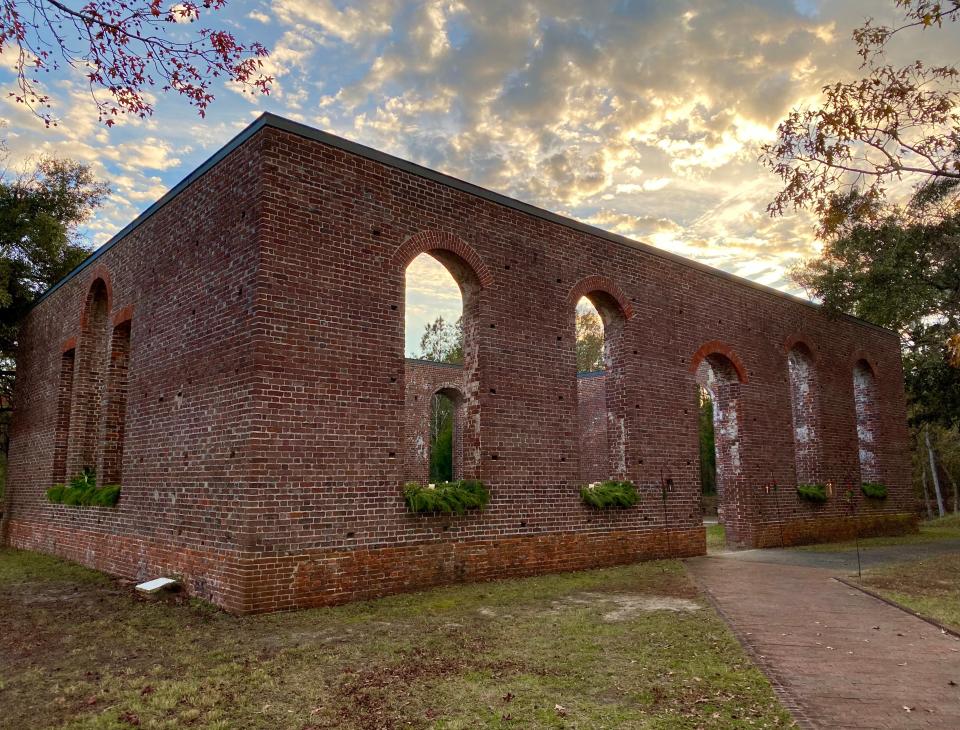
We discuss how the fort was constructed from the bones of the birthplace of the Cape Fear region as we know it and what role it played when it ultimately fell.
January 2020: Wrightsville Beach and Dread God of Fire
In 1934, Wrightsville Beach was on a high from nearly three decades of immense growth.
Massive hotels like The Oceanic brought in tourists, and venues like the famed Lumina Pavilion entertained them, as well as local residents, when they weren’t on the beach. Even the Great Depression hadn’t completely dampened the spirit.
It all seemed indestructible until a fire on Jan. 28, 1934, wiped out the entire north end of the island and threatened the beach’s livelihood in a matter of hours.
January 2020: Fall of Fort Fisher
War is hell, and it arrived on Fort Fisher's doorstep in late 1864 after three years of waiting and protecting Wilmington from Union control.
By this point, the fort's importance to the crumbling Confederate Cause was more vital than ever, and it would put up a fight when armies clashed on its shores.
![Site of the main magazine at Fort Fisher, date unknown. Most of the massive earthen fort has long been lost to the sea. [FEDERAL POINT HISTORIC PRESERVATION SOCIETY]](https://s.yimg.com/ny/api/res/1.2/BTulepRscjdBrEPsWtz.pg--/YXBwaWQ9aGlnaGxhbmRlcjt3PTk2MDtoPTcyMQ--/https://media.zenfs.com/en/star-news/5bd0ba16ae31600de3a46c100afbd67c)
This week on the podcast, we go back to the beginning of the fort to explore its construction (much of which was done by black men and Native Americans), the increasing value of its protection of Wilmington's supply routes, and why it is now one of the region's most recognized and visited landmarks.
Joining the conversation is John Moseley, assistant site manager and education director for the Fort Fisher State Historic Site.
January 2020: Cape Fear Indians
Before Brunswick Town and before Wilmington, the first residents of the Cape Fear were the native people who had inhabited the land, to varying degrees, for thousands of years.
Unfortunately, little is known about the people now known as the Cape Fear Indians. How did they live? How did they use the land? What happened to them and what can we still learn from them today?
We explore those questions and more, including a conversation with David La Vere, a professor of history at the University of North Carolina Wilmington.
October 2019: Ghosts in Thalian Hall?
With so much blood, sweat and tears going into the life and performances of a theater, it’s no wonder they are considered to be among the most haunted places.
Wilmington’s legendary Thalian Hall is no exception. Dating to 1858, Thalian Hall has its fair share of ghosts stories buried in its history.
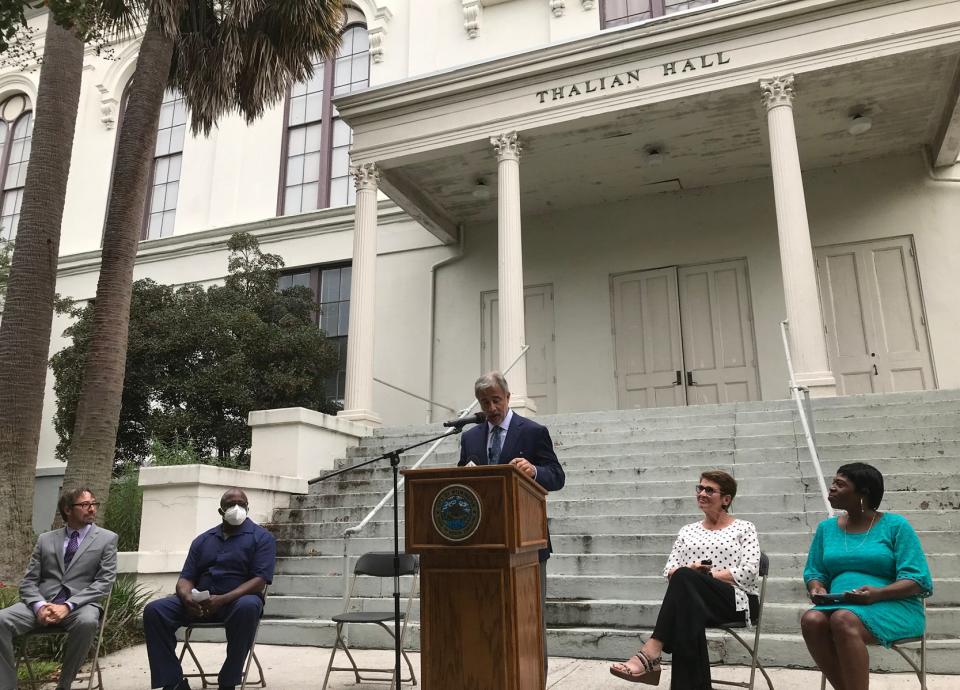
Do actors haunt the balcony? Did a spirit help out an actress in need of a hand? Did ghosts do their part in securing funds for a historic renovation?
October 2019: Ghost of General Whiting
Major General William H. C. Whiting’s legacy is eternally tied to the rise and fall of Fort Fisher during the Civil War.
But when he died in New York as a prisoner of the Union, Whiting was hundreds of miles from his adopted home in Wilmington. Still, legend says that even death didn’t stop him from making his return to Fort Fisher to become its eternal watcher.
October 2019: Season of the witch
Witches have become icons of Halloween, but in colonial America, they were something to be feared.
With the dawn of America and in the generations that followed, North Carolina protected itself against the perceived threat of witchcraft by establishing laws to try cases and accusations. But more telling was how the concern over witches embedded itself in the state's folklore, where stories of rituals and markings illustrate just how much the minions of the dark were feared.
In this episode, we will look at how one Cape Fear resident was granted the power to try witch cases, what folklore exists regarding witchcraft and how there were laws against witchcraft-like practices on the books in the state until more recently than you might think.
October 2019: Ghost on the water
The mighty Cape Fear River has ferried people up and down the region for centuries, so it should come as no surprise that one of the region's most legendary ghost stories happens on its back.
From the deck of Capt. John W. Harper's Steamer Wilmington around the turn of the 20th century, a chilling tale was born on Christmas Eve that has persisted in local legend for decades. Did the skeleton crew on the steamer actually see the ghosts of two colonial men? And how does the tragic tale of those men tie them to the Cape Fear River, seemingly for eternity?
October 2019: Spirits at Poplar Grove
For more than a century, the lives of the Foy family played out inside the walls of the manor home at Poplar Grove Plantation.
The plantation dates back to the Revolutionary War and persisted even when the Civil War nearly came right through its front yard. But with the history of the Foy's etched in its walls, could more than just memories lingers at Poplar Grove?
August 2019: Moonshiners
Prohibition ushered in an age of rule breakin’ and hooch makin’ in America, and the Cape Fear region played host to it all.
Illegal moonshining operations, public drunkenness and home speakeasies kept Wilmington-area Prohibition officers busy beginning in 1909 when North Carolina became a dry state – a full decade before the whole country followed suit.
On this episode, we talk about why North Carolina was quick to pass Prohibition, how it eroded public adherence to authority, where its impacts are still felt today and what led to the brutal moonshine-related murder of two officers in 1924.
August 2019: Hurricane history
Hurricanes are a reality of living on the coast. You can't stop, you can only prepare for them. But what about the hurricanes that plagued the earliest residents of the region?
This week's episode explores the storms that ravaged the Cape Fear from 1713 to 1954, the year Hurricane Hazel blew through and changed this region – and its relationship with hurricanes – forever.
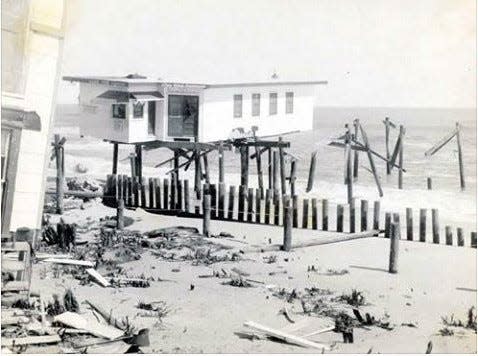
The episode features a conversation with "North Carolina's Hurricane History" author Jay Barnes about how colonial and antebellum residents prepared for storms and what we've learned from two centuries of savage hurricanes.
August 2019: Old Baldy
For 202 years, Old Baldy lighthouse on Bald Head Island has stood as a product of a different time in the Cape Fear region but an everlasting reminder of its history.
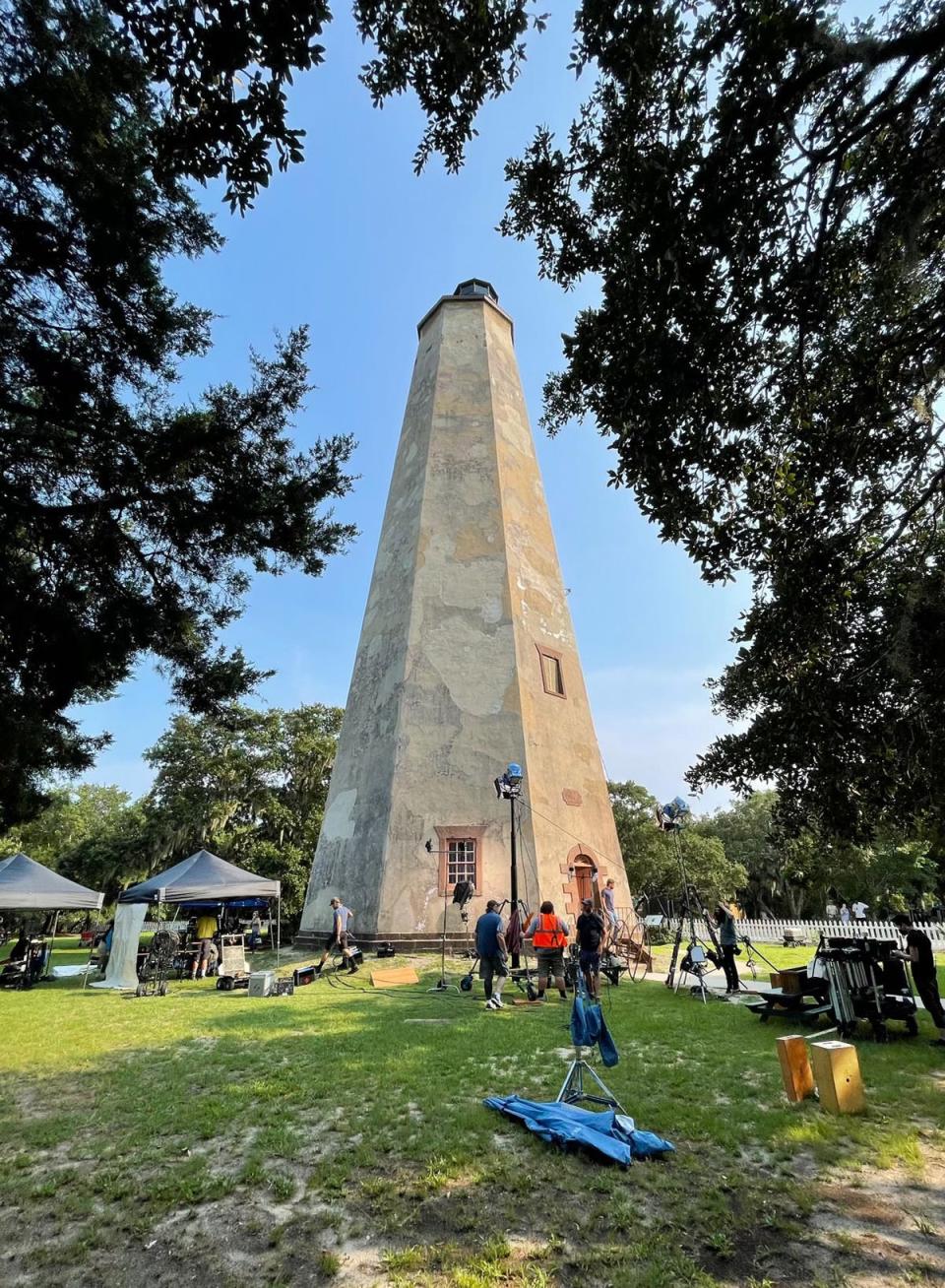
But Old Baldy is just one of three lighthouses that have stood on the island to help direct mariners around the dangerous shoals and into the Cape Fear River since 1795. Two have since been lost to time, but each lighthouse has helped shape the identity of the island and the development of the region.
July 2019: Helping smog victims; Ric Flair crash
An episode of Cape Fear Classics dives into two stories from the 20th century that could not be anymore wildly different.
The first tells of a time when Wilmington invited residents from a small Pennsylvania town overcome by deadly smog to come inhale some fresh air at Wrightsville Beach for a whirlwind trip that made national headlines in 1948.

The second is the incredible story of the plane crash in Wilmington that nearly killed legendary wrestler Ric Flair in 1975 and how it helped transform him into the Nature Boy.
July 2019: Brunswick Town
The foundation of the Cape Fear region can be traced to Brunswick Town, the area's first enduring settlement founded in 1726. But Brunswick's story isn't just defined by being the first.
It was the site of one of the first instances of the rebellion that sparked the American Revolution, the home of two royal governors and the battleground for struggles with the Spanish and the wrath of Mother Nature.
July 2019: Downfall of Charles Town
You're likely familiar with Charleston, the crown jewel of historic South Carolina. But have you ever heard of North Carolina's Charles Town?
The small settlement was actually the first Carolina community to bear the name of King Charles II and the first attempt to form a home in the Cape Fear region in 1664. But the will and ambition of the 800 or so settlers were no match for a string of crushing setbacks that brought a swift end to the settlement just three years after it started.
June 2019: Trouble comes to town
Spring 1928 brought clear skies, calm seas and a massive sperm whale to the shores of Wrightsville Beach. Measuring an astounding 54 feet long, the deceased whale shocked and fascinated the still-growing beach town like no other event in its history.
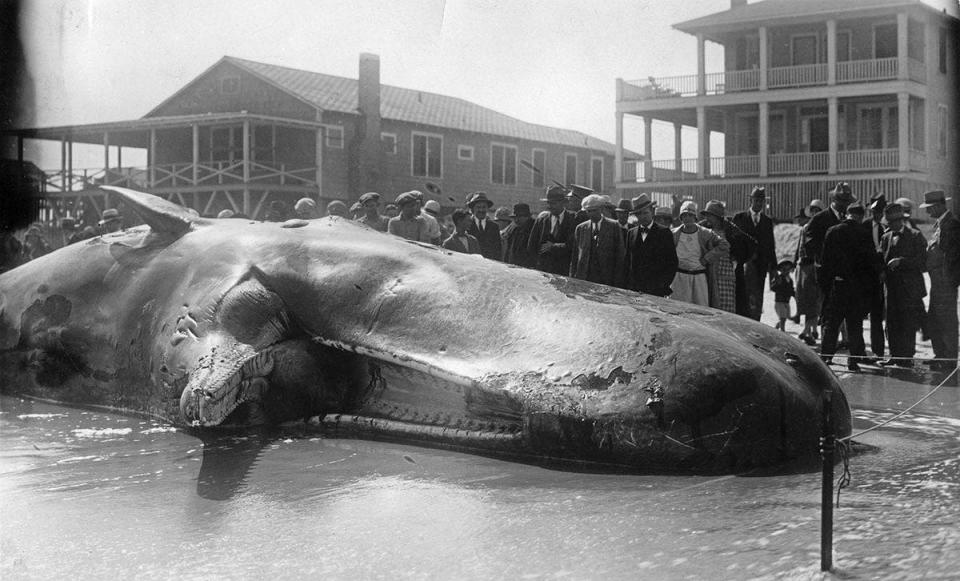
But that was just the start of a laborious two-year journey to give the whale, named Trouble, a second life as a member of the N.C. Museum of Natural Sciences' permanent mammal collection.
June 2019: A most daring escape
In the dead of night on Sept. 21, 1862, William Benjamin Gould and 21 other slaves escaped from Wilmington by commandeering three boats at the foot of Orange Street.
Gould would go on to join the Union Navy, fight for the cause of abolition and freedom for three years, and then start a family with his long-time love, Cornelia. His is a story of daring chances and hard-earned triumphs that begins with a single choice in Wilmington.
June 2019: Battleship North Carolina goes to war
The Battleship North Carolina was a legendary vessel in the nation's fleet when it was scheduled to be torn apart for scrap metal in 1958.
More: Battleship North Carolina celebrates 60th anniversary in Wilmington, plans for climate change
Despite its storied history of active service and a lineage that dates back to 1820, the Showboat, as it was called, was going to be torn apart until the state for which it is named rallied to save it and preserve its history.
On this episode, we explore that history, from the ship's construction and active service, to the day it was torpedoed and the historic campaign that gave it a second life.
June 2019: Blood and honor
In a time before Twitter and Facebook, men once defended their honor by fighting in duels rather than dragging each other's names in poorly composed posts on social media.
Duels weren't necessarily about killing one's opponent. They were about standing your ground and showing your name and reputation were worth dying for because, for many men, they were.
In this episode, we explore three important duels in the region's history. One was first to ever take place in the north colony of Carolina, while another is said to be the last fatal duel every fought in the South.
May 2019: The yellow death
For two months in the heart of the Civil War, Wilmington was ravaged by a sudden and unstoppable outbreak of yellow fever. The virus infected more than 1,500 people and killed an estimated 654, turning the Port City into a ghost town of fear and panic.
We revisit the treacherous two-month chapter in local history and then talk to Eric Kozen, superintendent of Oakdale Cemetery, and David Rice, former county health director, about the tragic losses, why Wilmington was so vulnerable to the disease and how it dealt with the escalating body count.
May 2019: The story of Firestarter
Few moments in the Cape Fear's history can claim to be as influential as the arrival of "Firestarter," the feature film adaptation of Stephen King's novel that launched the local film industry in 1983.
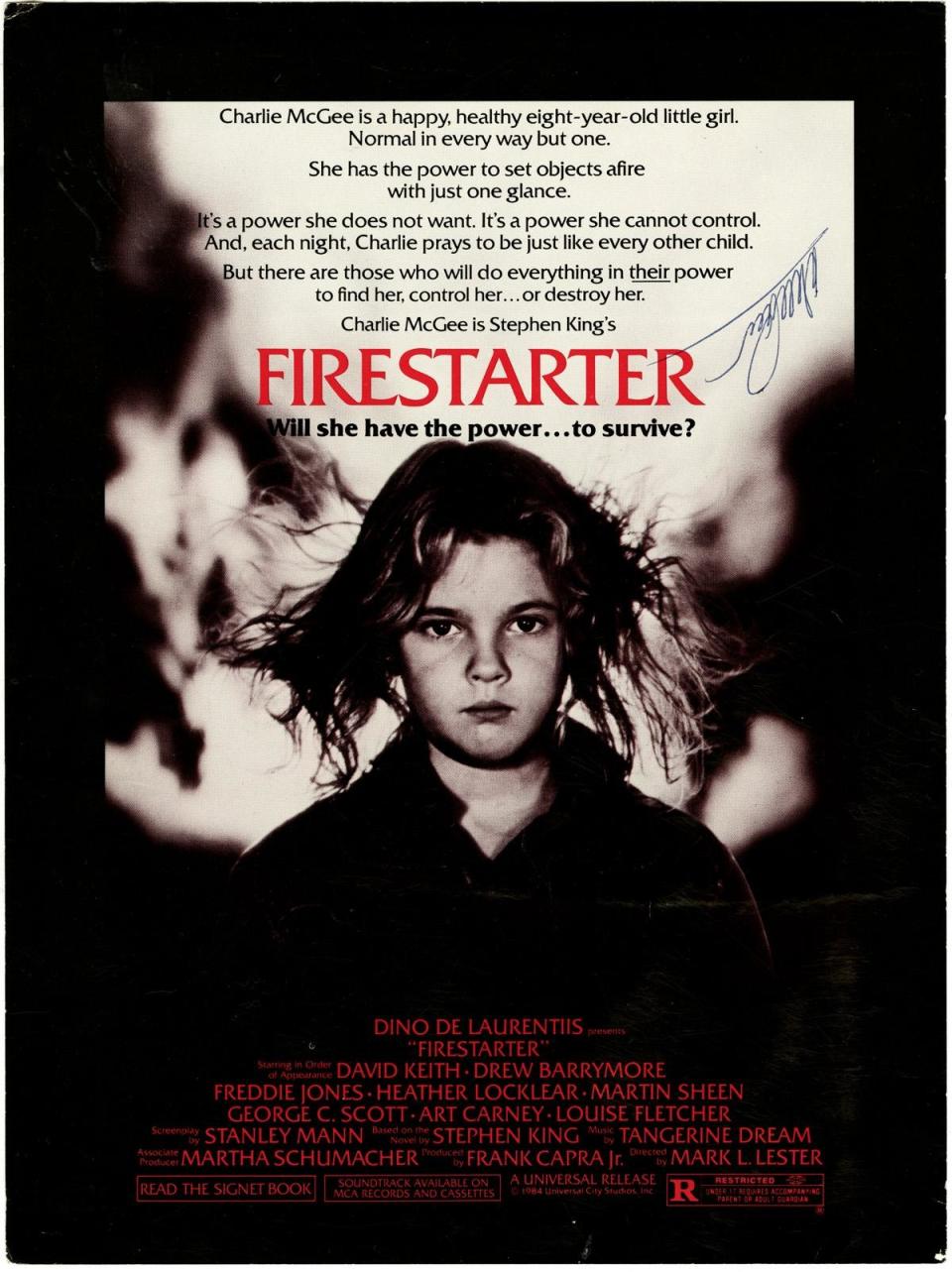
Released on May 11, 1984, the film starring Drew Barrymore turned 35 in 2019. To celebrate, Cape Fear Unearthed revisits the production's history, explores why Hollywood producer Dino De Laurentiis came to Wilmington in the first place and looks at it how laid the groundwork for the transformative industry that would emerge from it.
March 2019: Roots of the Azalea Festival
This region's residents and visitors are keenly aware that when the azaleas bloom each spring, the N.C. Azalea Festival isn't far behind. But do you know how the festival came to be and how it has evolved over time?
In this episode, we dig for the roots of the festival, why it has persisted and the many famous faces that have attended over 70 years.
March 2019: The Suicide Club
Ever heard of the story of the club of young men in 18th century Wilmington that mocked the religious Last Supper and then started dying one by one, either by suicide or mysterious means?
If you haven't, don't worry. It's not a story often told, but it is one that deserves to be dusted off and reexamined. For this week's second season finale, Chris E. Fonvielle Jr. returns to talk about the fact and fiction of The Suicide Club, and more broadly about the men and women who have helped preserve this region's history for nearly two centuries.
March 2019: Lumina Pavilion
Going to Wrightsville Beach in the early 20th century was like no other attraction in the state thanks to Lumina Pavilion, a grand and glowing venue for dancing, music and merriment. The staple of the coast and the South enjoyed decades of prominence until cars, war and rock 'n' roll brought about its demise.
We revisit the Palace of Light with special guest Madeline Flagler, the executive director of the Wrightsville Beach Museum and History.
March 2019: Wilmington in time of Nazis
Did you know that in the height of World War II, Nazi soldiers were held as prisoners of war in camps in Wilmington?
It's true, and it's just one of the stories discussed as this episode heads back to the 1940s to explore Wilmington during wartime, including a look at the legend of the U-boat bombing in Kure Beach.
February 2019: Dram Tree, Seneca Guns, Monkey Junction
Here are three short stories from the area's history books: the legendary ancient Dram Tree that welcomed mariners into Wilmington's harbor for centuries, the peculiar mystery of the Seneca Guns and the origin of Monkey Junction's namesake.
February 2019: Ghosts of Gallows Hill
Wilmington has no shortage of ghost stories, but the one that persists at the Price-Gause House on Market Street is more than just another haunted tale. It's rooted in a time when public executions were held on the land the house now sits on.
We explore the history of Gallows Hill, the ghost story that sprung up in its wake and are joined by local historians Beverly Tetterton and Chris E. Fonvielle Jr. to talk about why it is not the only site where gallows once stood.
February 2019: Massacre after midnight
James Love fought alongside Patriots in the Battle of Moore's Creek Bridge in the first year of the Revolutionary War, only to die five years later in a vicious massacre spurred by bruised egos. At least that's what the legend says.
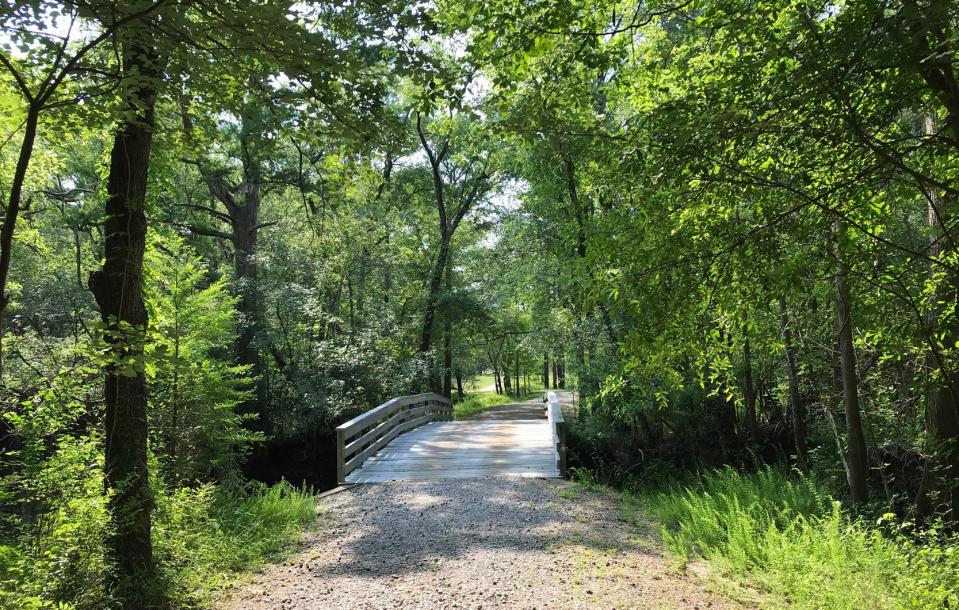
This week, we head back to the time when American fought for its freedom and future to explore the seismic implications of what happened at Moore's Creek Bridge and whether or not the Rouse Tavern Massacre of 1781 actually happened.
January 2019: The Hermit of Fort Fisher
For more than 15 years, the region's most popular resident didn't live in a historic home in the heart of Wilmington but in a tight concrete bunker in the marsh of Fort Fisher. Robert E. Harrill is now known widely as The Hermit of Fort Fisher, who lived off the land, entertained tourists and died mysteriously — all of which have created one of the region's most circulated legends.
January 2019: Lost Treasure of Money Island
Plenty of legends speak of pirates around these parts in the days when they sailed the high seas, but what's the truth? This week, we start with the legend of a supposed treasure island right off Wrightsville Beach, aptly dubbed Money Island.
Then, underwater archaeologist John "Billy Ray" Morris III joins to discuss fact vs. fiction on the Cape Fear's history with piracy.
January 2019: Rebel Rose
Rose O'Neal Greenhow was a well-known D.C. socialite when she signed on to become a spy for the Confederacy in the Civil War. But her story doesn't take place in the shadows. She was imprisoned, sent to Europe, dined with royalty and eventually drowned off Fort Fisher, all before the War Between the States came to a close.
January 2019: Elephant on the loose
In the fall of 1922, the circus rolled into town and brought with it Topsy, a four-ton elephant that would escape her handlers twice and lead a chase through Wilmington that included a swim in the Cape Fear River and a warpath of damaged buildings.
December 2018: A Cape Fear Christmas
A special Christmas episode of Cape Fear Unearthed to share three stories of local festive traditions — the John Kuners performances, the World's Largest Living Christmas Tree and The Christmas Flounder.
October 2018: One Tree Hill
Whether you've watched it yourself or heard about it around town, the lingering presence of "One Tree Hill" in Wilmington and Southeastern N.C. is virtually inescapable. But how did the show get its start in the Cape Fear region, and why does it still have a undeniable impact more than half a decade after it went off the air?

We explore those questions and more in this very special episode of Cape Fear Unearthed, featuring and interview with James Lafferty, who starred on The CW series' nine-season run.
October 2018: Beasts of the Cape Fear
Ever heard of the giant snake that guarded the mouth of the Cape Fear River? Or the shaggy creature the lurked in downtown Wilmington in 1909? You've probably heard rumbling of the Beast of Bladenboro, right? All of these monsters are things of legend in the Cape Fear region, but were they real?
September 2018: The Maco Light
Legend tells of a man by the name of Joe Baldwin, whose ghost walked the train tracks where he died in the mid-1800s. But is Joe's story true, and was his name even Joe?
September 2018: Down with the ship
When a blockade runner went up in flames off Wrightsville Beach in February 1864, a legend was born about what may have gone down with the ship. Specifically, a fabled gold and jewel sword bound for Gen. Robert E. Lee from his supporters in Britain. Was the sword real?
September 2018: Charred Wilmington
In its second century, Wilmington was plagued by a rash of devastating fires that destroyed much of the history it built in its formative years. Why was Wilmington so vulnerable to the scourge of fire and what was lost in the flames?
August 2018: Girl in the barrel
Nancy Martin's life was cut short in 1857 while on a ship bound for Cuba. But it's the way she was buried that has defined her story for more than 150 years.
August 2018: Watery grave
Theodosia Burr Alston's name has found new life thanks to the Broadway musical "Hamilton." But what really happened to the daughter of Aaron Burr, who's life took a dark turn and ended, according to legend, at the bottom of the ocean.
August 2018: The body under Third Street
Was a colonial Englishman murdered and buried on what would become Third Street in downtown Wilmington? Hunter Ingram and guest Beverly Tetterton discuss fact vs. fiction in this episode.
August 2018: Freedom fighter
Abraham H. Galloway, born in 1837 in what's now Southport, went from slave to Union spy and helping slaves gain freedom.
August 2018: Below the surface
The forgotten tunnels of Wilmington, more than 200 years old, are explored and why they were vital to the early growth of the city. One of those, Jacob's Run, have all sorts of tales, many of them fiction.
July 2018: (Un)dead and buried
The first episode of Cape Fear Unearthed highlights Samuel Jocelyn, the man buried alive at St. James Episcopal Church in downtown Wilmington in 1810.
This article originally appeared on Wilmington StarNews: Cape Fear Unearthed: A guide to every episode of the history podcast

